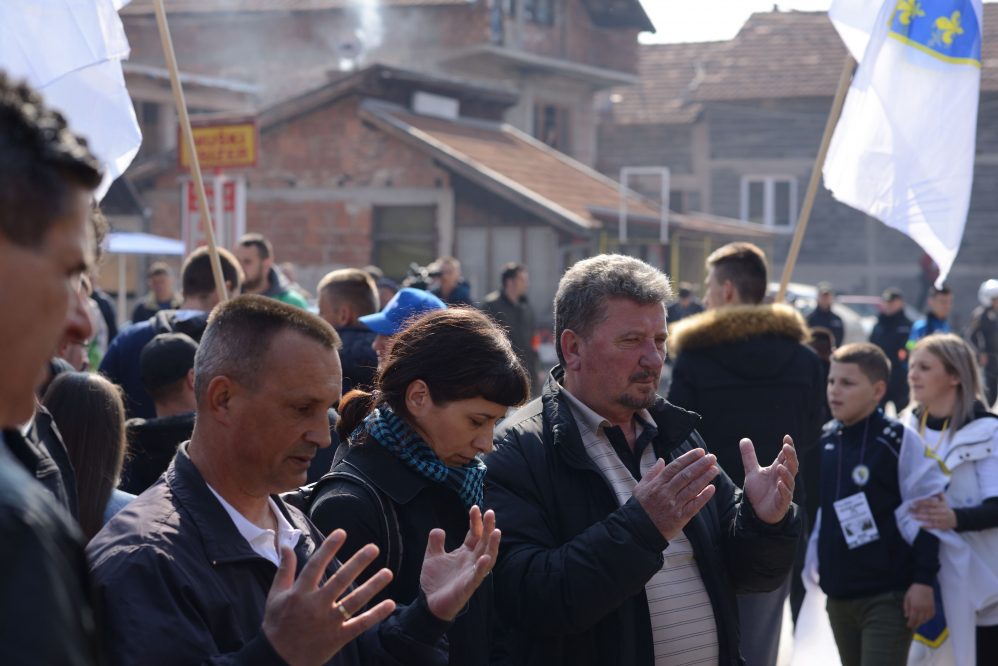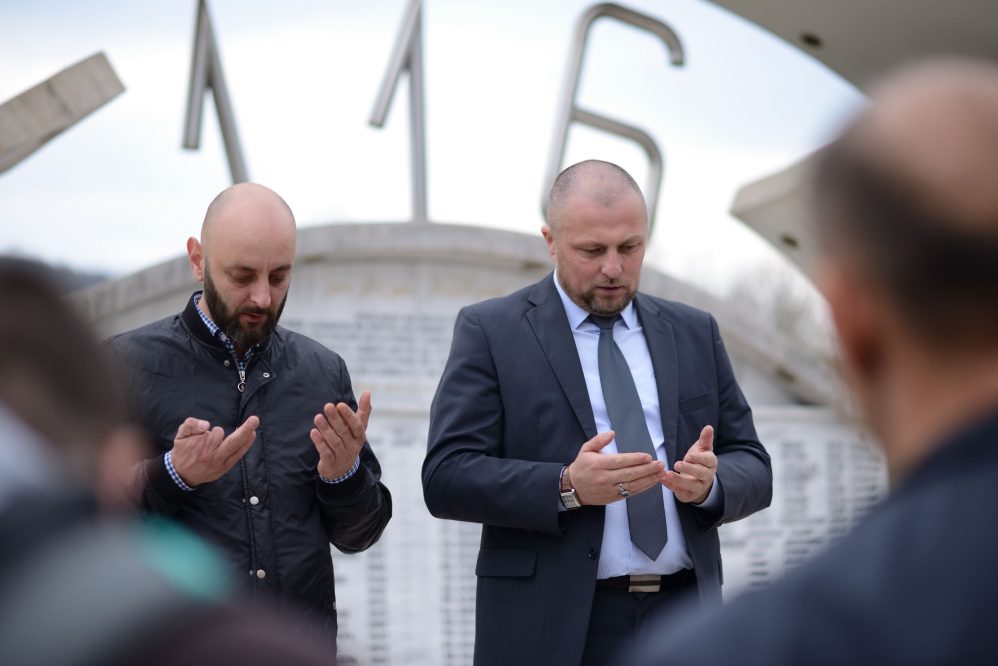I first heard about Ahmići from the Ahmićes themselves, Kenan and others who came to my primary school some 15 kilometres or so away from Ahmići, after they were expelled from their village. Three years of getting to know them cannot be filed under refugees or returnees, but these are the words that frame my memory of the Ahmićes.
Ahmići were the first place outside the world of my boyhood that I knew about without ever having been there, not even in passing. Ahmići were the first place I adopted, like I would later, through other dear people, come to adopt Vlasenica, Mala Brijesnica in Doboj and Seattle, before ever having set foot in them.
It is people who connect you to other places. But then, there are also examples where places, villages, towns become connected through events without the people ever having met. The Bosnian-Herzegovinian calendar of pain has thus forever linked Ahmići and Trusina, Bosnia with Herzegovina, crime with crime, memory with memory.
The untrodden paths of memory
Ahmići and Trusina had nothing to connect them before 16 April 1993: One is a village in Bosnia, the other in Herzegovina, one is situated in a valley, the other in the hills at the foot of Mount Igman, and it would be safe to assume that the people of Trusina had never heard of Ahmići, just as the people of Ahmići had never heard of Trusina. On that fateful day of 16 April 1993, members of the Army of BiH committed an atrocity against the (Croat) villagers of Trusina, while members of HVO committed an atrocity against the (Bosniak) villagers of Ahmići, thereby connecting these two places with an enduring pain.
The presence of our mixed group of war veterans from the region at the commemoration in Ahmići on 15 and 16 April 2019 completed a year-long journey along the untrodden paths of memory. Trusina – 16 April 2018 Ahmići – 16 April 2019.

A group of some 30 war veterans from the region, former members of the Army of RBiH, HVO, HV, VRS and VJ came to Ahmići on 15 April to visit the monument to the killed villagers of Ahmići, they met with representatives of the victims’ association, talked with them and visited the memorial room with photographs testifying to that painful day in April 1993. Since the commemoration is attended by some 2000 people, we knew that arriving a day in advance would give us a better chance of having these meetings. We were welcomed to Ahmići by representatives of the Organising Committee for the Commemoration on 16 April, Mahir ef. Husić and Nedžad Abdić.
They briefly explained what happened in Ahmići on 16 April 1993, but also told us about the return to Ahmići that started in 1998 with the reconstruction of the first houses and the local mosque, the monument that was erected in memory of the 116 villagers of Ahmići killed in 1993.
On 16 April, the day of the commemoration, we joined the “Truth and Memory” march that started from Stari Vitez where the victims from Ahmići are buried. Veterans laid flowers at the “Cisterna” monument and joined the official part of the commemoration by the Donja Mosque in Ahmići.
Take a long hard look inside yourself
“Unfortunately, this is not a lone example, but it is one of the darkest in terms of the victims, and the manner of execution, and when you look at who the victims were – the elderly, women and children. There can be no justification – not military or tactical,” said Saša Premec, a veteran of HV. He added that on all sides, we must “take a long hard look inside ourselves and convey our experiences and thoughts to future generations – our children and grandchildren… and hope that they will have more wisdom than us.”
Edin Ramulić, a veteran of the Army of BiH, believes that each side tries to close off even commemorations into its own space.

“There is usually just one religious community involved, it is usually closed off, like here (in Stari Vitez and Ahmići) in the yard of a mosque, a memorial, a cemetery. It becomes closed to the others. Last year, we were in Trusina on this same day. Because of this tragedy where the two sides committed crimes on the same day. I’m glad we came to Ahmići this year – because of equal treatment of all victims,” Ramulić pointed out.
The visit by a mixed group of war veterans is an indication that we can and should remember other victims, those who are not of our own people, that we should show them the same compassion and respect.
“We are here to say that there is another way, that we should show compassion and respect not just for victims from among our own people, but for those of others too. That way, we can lay some foundations for peace and coexistence in this region, which is our ultimate goal – to make sure our children never have to go through what we went through,” said Krešimir Ivančić, a veteran of HV.
“We should honour all victims, meet with people who have lost their loved ones and try to find solutions among the people,” added Ivo Anđelović, a veteran of HVO.
Today, the commemoration in Ahmići, along with the one honouring the victims of the Srebrenica genocide, is the most important commemoration within the Bosniak narrative. This was not always so. For a long time, the commemoration in Ahmići was very conservative, meaning that it was closed to most outsiders, including CNA and the war veterans who had wanted to come to Ahmići already a few years ago. Its development from a very local commemoration changed over the past few years, probably for two key reasons. One has to do with the needs of the local Bosniak community to be more visible in the town of Vitez where the Bosniaks account for almost half the population, but where the community is in a way marginalised, as shown by the fact that the Mayor would not allow the commemorative assembly to be held at the Vitez Municipality building and it had to be moved to a place of worship. The other reason could have something to do with the general political situation in the Federation of BiH and the evident conflict between Bosniak and Croat politicians regarding the manner of electing members to the BiH Presidency, changes to the Constitution and a redefining of relations in this entity. In political conflicts, the past is unfortunately still a significant resource.
Who/what are commemorations for?
Attending commemorations always takes us back to some basic questions: why are we here, why do we commemorate victims, why do we remember a painful past? It may sound harsh, but it is important to ask the question: who/what are commemorations for?
The Israeli historian Yuval Noah Harari, responding to similar questions, said that the primary role of history was to free us from the past. This liberation happens when from a distance in time and with the privilege of retrospection that those directly involved in the events did not have, we look at past events and try to understand that they were not inevitable, but happened as a result of decisions made by people, through their choices and the circumstances at the time. Such an understanding of the past should lead to responsibility for the present and future, an awareness that each choice we make, each decision, action and inaction has consequences.
One day, I am certain of it, Trusina and Ahmići will meet, the mountain will come down into the valley and the valley will climb up into the mountains, and all that without looking to who started first, whether those climbing the mountain or those coming down into the valley, the two worlds will meet, embrace and cry on each other’s shoulders. The prospect of such a meeting is what brings us to both Ahmići and Trusina, to show that there is another way, a path that is not easy but that leads to liberation. A liberation from pain, from hatred, from fear. Many things point to the need for a different kind of remembering, one being the extraordinary media interest in the presence of veterans in Ahmići.
Ahmići and Trusina were not inevitable. But remembering Trusina and Ahimići is indispensable if we are to take on the responsibility of making sure such violence never happens again.
The photo gallery can be viewed HERE